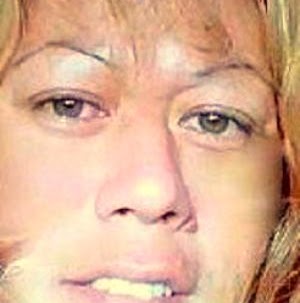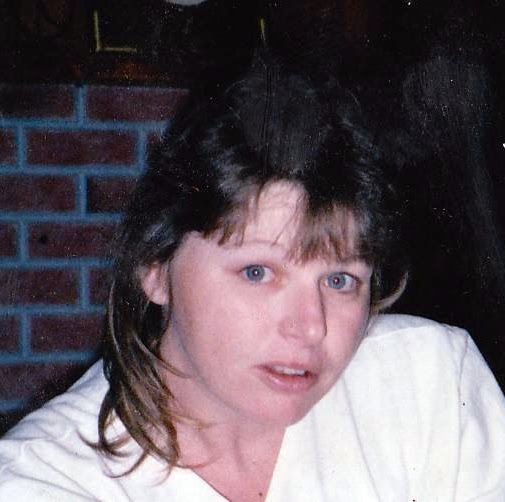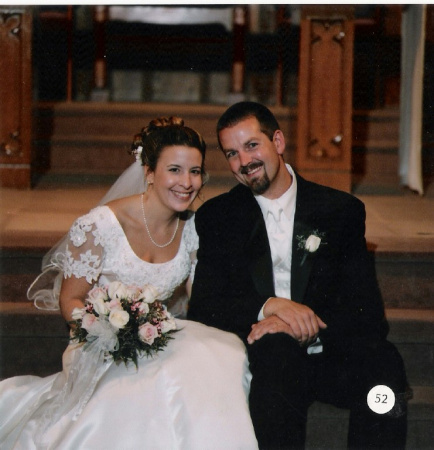Roberta H Lee
age ~81
from San Mateo, CA
- Also known as:
-
- Roberta Helene Lee
- Coleman Roberta Lee
- Coleman Roberta H Lee
- Coleman J Lee
- Coleman R Lee
- Roberta H Trs
- Stephanie Lee
- Coleman Lee Trst
Roberta Lee Phones & Addresses
- San Mateo, CA
- Vacaville, CA
- Burlingame, CA
- Kaneohe, HI
- Tampa, FL
- 44-259 Mikiola Dr, Kaneohe, HI 96744 • 4088357312
Name / Title
Company / Classification
Phones & Addresses
President
Cubuus, Inc
1017 El Camino Real, Redwood City, CA 94063
Merivale, LLC
1017 El Camino Real, Redwood City, CA 94063
60 E Simpson Ave, Jackson, WY 83001
60 E Simpson Ave, Jackson, WY 83001
Global Y F Company International, LLC
Business Services at Non-Commercial Site · Nonclassifiable Establishments
Business Services at Non-Commercial Site · Nonclassifiable Establishments
3939 Smith St, Union City, CA 94587
826 Shattuck Ave, Berkeley, CA 94707
826 Shattuck Ave, Berkeley, CA 94707
President
MANOA MEDICAL, INC
Mfg Surgical/Medical Instruments
Mfg Surgical/Medical Instruments
1017 El Camino Real #361, Redwood City, CA 94063
6507595520
6507595520
President
ACUEITY HEALTHCARE, INC
1017 El Camino Real #361, Redwood City, CA 94063
President
ROBERTA LEE, M.D., INC
Surgeons
Surgeons
1017 El Camino Pmb 436, Redwood City, CA 94063
1017 El Camino Real, Redwood City, CA 94063
6503421414
1017 El Camino Real, Redwood City, CA 94063
6503421414
Treasurer
Wailuku Polaris, Inc
3625 Yuma St NW, Washington, DC 20008
10 Kimo Dr, Honolulu, HI 96817
116 Ragsdale Pl, Honolulu, HI 96817
3526 Yuma St NW, Washington, DC 20008
10 Kimo Dr, Honolulu, HI 96817
116 Ragsdale Pl, Honolulu, HI 96817
3526 Yuma St NW, Washington, DC 20008
Resumes

Vice President At Visa
view sourcePosition:
Vice President, Global Products at Visa
Location:
San Francisco Bay Area
Industry:
Financial Services
Work:
Visa since 1992
Vice President, Global Products
Visa 1992 - 2008
Vice President, Global Products
Visa International 1992 - 2007
Vice President
Self Employed 1991 - 1992
Marketing Consultant
AT&T 1984 - 1991
Marketing Manager
Vice President, Global Products
Visa 1992 - 2008
Vice President, Global Products
Visa International 1992 - 2007
Vice President
Self Employed 1991 - 1992
Marketing Consultant
AT&T 1984 - 1991
Marketing Manager
Education:
The University of Chicago - Booth School of Business 1982 - 1984
MBA University of California, Davis
MBA University of California, Davis

Roberta Lee
view sourceLocation:
United States

Assistant Manager
view sourcePosition:
Assistant Manager at Global Pharmaceuticals Company
Location:
Virgin Islands (U.S.)
Industry:
Pharmaceuticals
Work:
Global Pharmaceuticals Company since Jul 2012
Assistant Manager
Cell culture and Bioengineering Lab - Shanghai JiaoTong University Jul 2011 - Jul 2012
Student Researcher
SAY SD, LISC Americorps Sep 2009 - Aug 2010
Community Outreach Specialist
Assistant Manager
Cell culture and Bioengineering Lab - Shanghai JiaoTong University Jul 2011 - Jul 2012
Student Researcher
SAY SD, LISC Americorps Sep 2009 - Aug 2010
Community Outreach Specialist
Education:
University of California, San Diego 2004 - 2009
Bachelor
Bachelor

Roberta Lee
view sourceLocation:
United States

President And Ceo At Acueity Healthcare, Inc.
view sourceLocation:
San Francisco Bay Area
Industry:
Health, Wellness and Fitness

Roberta Lee Jonesboro, GA
view sourceWork:
Atlanta Center of Self Sufficiency
Mar 2011 to Mar 2011
Server Saint Louis Highlights Tours
St. Louis, MO
2004 to 2010
Travel Coordinator Mailroom
St. Louis, MO
1999 to 2001
Today's Temp Ford Motor Company
St. Louis, MO
1996 to 1999
Assembly Worker Walmart
St. Louis, MO
1996 to 1997
Cashier STEP, Inc
St. Louis, MO
1992 to 1995
Clerk
Mar 2011 to Mar 2011
Server Saint Louis Highlights Tours
St. Louis, MO
2004 to 2010
Travel Coordinator Mailroom
St. Louis, MO
1999 to 2001
Today's Temp Ford Motor Company
St. Louis, MO
1996 to 1999
Assembly Worker Walmart
St. Louis, MO
1996 to 1997
Cashier STEP, Inc
St. Louis, MO
1992 to 1995
Clerk
Education:
Ashford University
Clinton, IA
2011 to 2012
Bachelor Degree in Political Science Georgia State University
2011
Political Science Webster University
2010
Legal Studies St. Louis Community College
2009
A.A.S. in Paralegal Studies Kaplan University
Davenport, IA
2006
Legal Studies United Travel School
Clearwater, FL
1996
Certificate of Completion in Travel Industry The Jobs Partnership Center
Kirkwood, MO
1993
Certificate of Completion in Business Administration University City Senior High School
University City, MO
Sep 1982 to Jun 1986
Diploma
Clinton, IA
2011 to 2012
Bachelor Degree in Political Science Georgia State University
2011
Political Science Webster University
2010
Legal Studies St. Louis Community College
2009
A.A.S. in Paralegal Studies Kaplan University
Davenport, IA
2006
Legal Studies United Travel School
Clearwater, FL
1996
Certificate of Completion in Travel Industry The Jobs Partnership Center
Kirkwood, MO
1993
Certificate of Completion in Business Administration University City Senior High School
University City, MO
Sep 1982 to Jun 1986
Diploma
Isbn (Books And Publications)


Integrative Medicine Value Pack: Principles for Practice
view sourceAuthor
Roberta Anne Lee
ISBN #
0071446141
Medicine Doctors

Roberta T. Lee
view sourceSpecialties:
Pediatrics
Work:
Clear Lake Pediatrics ClinicClear Lake Pediatric Clinic
16 Professional Park Dr, Webster, TX 77598
2813323503 (phone), 2813323506 (fax)
16 Professional Park Dr, Webster, TX 77598
2813323503 (phone), 2813323506 (fax)
Education:
Medical School
University of Texas Medical School at Houston
Graduated: 1976
University of Texas Medical School at Houston
Graduated: 1976
Procedures:
Destruction of Benign/Premalignant Skin Lesions
Hearing Evaluation
Psychological and Neuropsychological Tests
Pulmonary Function Tests
Vaccine Administration
Hearing Evaluation
Psychological and Neuropsychological Tests
Pulmonary Function Tests
Vaccine Administration
Conditions:
Acute Bronchitis
Acute Conjunctivitis
Acute Pharyngitis
Acute Sinusitis
Anemia
Acute Conjunctivitis
Acute Pharyngitis
Acute Sinusitis
Anemia
Languages:
English
Spanish
Vietnamese
Spanish
Vietnamese
Description:
Dr. Lee graduated from the University of Texas Medical School at Houston in 1976. She works in Webster, TX and specializes in Pediatrics. Dr. Lee is affiliated with Clear Lake Regional Medical Center and Texas Childrens Hospital.

Roberta Lee, Santa Rosa CA
view sourceSpecialties:
Surgeon
Address:
3536 Mendocino Ave, Santa Rosa, CA 95403
1017 El Camino Real, Redwood City, CA 94063
1017 El Camino Real, Redwood City, CA 94063
Us Patents
-
Excisional Biopsy Devices And Methods
view source -
US Patent:6423081, Jul 23, 2002
-
Filed:Oct 13, 1999
-
Appl. No.:09/417520
-
Inventors:Roberta Lee - Redwood City CA
James W. Vetter - Portola Valley CA -
Assignee:Rubicor Medical, Inc. - Redwood City CA
-
International Classification:A61B 1722
-
US Classification:606159
-
Abstract:An excisional biopsy device includes a tubular member having a window near a distal tip thereof; a cutting tool, a distal end of the cutting tool being attached near the distal tip of the tubular member, at least a distal portion of the cutting tool being configured to selectively bow out of the window and to retract within the window; and a tissue collection device externally attached at least to the tubular member, the tissue collection device collecting tissue excised by the cutting tool as the biopsy device is rotated and the cutting tool is bowed. An excisional biopsy method for soft tissue includes the steps of inserting a generally tubular member into the tissue, the tubular member including a cutting tool adapted to selectively bow away from the tubular member and an external tissue collection device near a distal tip of the tubular member; rotating the tubular member; selectively varying a degree of bowing of the cutting tool; collecting tissue severed by the cutting tool in the tissue collection device; and retracting the tubular member from the soft tissue. The tubular member may include an imaging transducer and the method may include the step of displaying information received from the transducer on a display device and the step of varying the degree of bowing of the cutting tool based upon the displayed information from the imaging transducer. Alternatively, the imaging transducer may be disposed within a removable transducer core adapted to fit within the tubular member.
-
Excisional Biopsy Devices And Methods
view source -
US Patent:6440147, Aug 27, 2002
-
Filed:May 4, 2000
-
Appl. No.:09/565611
-
Inventors:Roberta Lee - Redwood City CA
James W. Vetter - Portola Valley CA
Ary S. Chernomorsky - Millbrae CA -
Assignee:Rubicor Medical, Inc. - Redwood City CA
-
International Classification:A61B 1732
-
US Classification:606159, 606170, 600567
-
Abstract:An excisional biopsy system includes a tubular member that has a proximal end and a distal end in which one or more windows are defined. A first removable probe has a proximal portion that includes a cutting tool extender and a distal portion that includes a cutting tool. The first removable probe may be configured to fit at least partially within the tubular member to enable the cutting tool to selectively bow out of and to retract within one of the windows when the cutting tool extender is activated. A second removable probe has a proximal section that includes a tissue collection device extender and a distal section that includes a tissue collection device. The second removable probe may also be configured to fit at least partially within the tubular member to enable the tissue collection device to extend out of and to retract within one of the windows when the tissue collection device extender is activated. A third removable probe may also be provided. The third removable probe may also be configured to fit at least partially within the tubular member and may include an imaging device, such as an ultrasound transducer, mounted therein.
-
Excisional Biopsy Devices And Methods
view source -
US Patent:6689145, Feb 10, 2004
-
Filed:Jan 31, 2002
-
Appl. No.:10/066428
-
Inventors:Roberta Lee - Redwood City CA
James W. Vetter - Portola Valley CA
Ary S. Chernomorsky - Millbrae CA -
Assignee:Rubicor Medical, Inc. - Redwood City CA
-
International Classification:A61B 1732
-
US Classification:606159, 600564
-
Abstract:An excisional biopsy system includes a tubular member that has a proximal end and a distal end in which one or more windows are defined. A first removable probe has a proximal portion that includes a cutting tool extender and a distal portion that includes a cutting tool. The first removable probe may be configured to fit at least partially within the tubular member to enable the cutting tool to selectively bow out of and to retract within one of the windows when the cutting tool extender is activated. A second removable probe has a proximal section that includes a tissue collection device extender and a distal section that includes a tissue collection device. The second removable probe may also be configured to fit at least partially within the tubular member to enable the tissue collection device to extend out of and to retract within one of the windows when the tissue collection device extender is activated. A third removable probe may also be provided. The third removable probe may also be configured to fit at least partially within the tubular member and may include an imaging device, such as an ultrasound transducer, mounted therein.
-
Excisional Biopsy Devices And Methods
view source -
US Patent:6702831, Mar 9, 2004
-
Filed:Jan 31, 2002
-
Appl. No.:10/066462
-
Inventors:Roberta Lee - Redwood City CA
James W. Vetter - Portola Valley CA -
Assignee:Rubicor Medical, Inc.
-
International Classification:A61B 1732
-
US Classification:606159, 600564
-
Abstract:An excisional biopsy device includes a tubular member having a window near a distal tip thereof; a cutting tool, a distal end of the cutting tool being attached near the distal tip of the tubular member, at least a distal portion of the cutting tool being configured to selectively bow out of the window and to retract within the window; and a tissue collection device externally attached at least to the tubular member, the tissue collection device collecting tissue excised by the cutting tool as the biopsy device is rotated and the cutting tool is bowed. An excisional biopsy method for soft tissue includes the steps of inserting a generally tubular member into the tissue, the tubular member including a cutting tool adapted to selectively bow away from the tubular member and an external tissue collection device near a distal tip of the tubular member; rotating the tubular member; selectively varying a degree of bowing of the cutting tool; collecting tissue severed by the cutting tool in the tissue collection device; and retracting the tubular member from the soft tissue. The tubular member may include an imaging transducer and the method may include the step of displaying information received from the transducer on a display device and the step of varying the degree of bowing of the cutting tool based upon the displayed information from the imaging transducer. Alternatively, the imaging transducer may be disposed within a removable transducer core adapted to fit within the tubular member.
-
Ultrasound Imaging Of Breast Tissue Using Ultrasound Contrast Agent
view source -
US Patent:6736781, May 18, 2004
-
Filed:Jun 11, 2002
-
Appl. No.:10/167017
-
Inventors:Roberta Lee - Redwood City CA
-
Assignee:Manoa Medical, Inc. - Redwood City CA
-
International Classification:A61B 814
-
US Classification:600458
-
Abstract:A system and method for ultrasound imaging of breast tissue by injecting an ultrasound contrast agent into a duct lumen of a patients breast to enhance the imaging of one or more ducts within a specified lobe of the breast to improve characterization of a lesion or lesions within the duct system of the specified lobe are disclosed. The ultrasound contrast agent used to improve breast imaging may be injected into the duct lumen through an orifice on the nipple and/or a duct wall into the duct lumen. The ultrasound contrast agent may be injected prior to and/or during ultrasound imaging. The ultrasound contrast agent may be an acoustically detectable gas such as a halogenated hydrocarbon, halogenated alkane gases, nitrogen, helium, argon and/or xenon. The halogenated alkane gas may be a perfluorinated hydrocarbon such as saturated perfluorocarbon, unsaturated perfluorocarbon, and/or cyclic perfluorocarbon. The acoustically detectable gas may alternatively be mixed in a liquid solution.
-
Devices And Methods For Tissue Severing And Removal
view source -
US Patent:6743228, Jun 1, 2004
-
Filed:Mar 12, 2002
-
Appl. No.:10/097412
-
Inventors:Roberta Lee - Redwood City CA
-
Assignee:Manoa Medical, Inc. - Redwood City CA
-
International Classification:A61B 1818
-
US Classification:606 47, 606113, 606170, 606 41
-
Abstract:The present invention relates to devices and methods that enhance the accuracy of lesion excision, through severing, capturing and removal of a lesion within soft tissue. Furthermore, the present invention relates to devices and methods for the excision of breast tissue based on the internal anatomy of the breast gland. A tissue severing device generally comprises a guide having at least one lumen and a cutting tool contained within the lumen. The cutting tool is capable of extending from the lumen and forming an adjustable cutting loop. The cutting loop may be widened or narrowed and the angle between the loop extension axis and the guide axis may be varied. Optional tissue marker and tissue collector may additionally be provided. A method for excising a mass of tissue from a patient is also provided. The device and method are particularly useful for excising a lesion from a human breast, e. g.
-
Excisional Biopsy Devices And Methods
view source -
US Patent:6764495, Jul 20, 2004
-
Filed:Mar 14, 2002
-
Appl. No.:10/098014
-
Inventors:Roberta Lee - Redwood City CA
James W. Vetter - Portola Valley CA -
Assignee:Rubicor Medical, Inc. - Redwood City CA
-
International Classification:A61B 1722
-
US Classification:606159, 600564
-
Abstract:An excisional biopsy device includes a tubular member having a window near a distal tip thereof; a cutting tool, a distal end of the cutting tool being attached near the distal tip of the tubular member, at least a distal portion of the cutting tool being configured to selectively bow out of the window and to retract within the window; and a tissue collection device externally attached at least to the tubular member, the tissue collection device collecting tissue excised by the cutting tool as the biopsy device is rotated and the cutting tool is bowed. An excisional biopsy method for soft tissue includes the steps of inserting a generally tubular member into the tissue, the tubular member including a cutting tool adapted to selectively bow away from the tubular member and an external tissue collection device near a distal tip of the tubular member; rotating the tubular member; selectively varying a degree of bowing of the cutting tool; collecting tissue severed by the cutting tool in the tissue collection device; and retracting the tubular member from the soft tissue. The tubular member may include an imaging transducer and the method may include the step of displaying information received from the transducer on a display device and the step of varying the degree of bowing of the cutting tool based upon the displayed information from the imaging transducer. Alternatively, the imaging transducer may be disposed within a removable transducer core adapted to fit within the tubular member.
-
Methods And Systems For In Situ Tissue Marking And Orientation Stabilization
view source -
US Patent:6780179, Aug 24, 2004
-
Filed:May 22, 2002
-
Appl. No.:10/155570
-
Inventors:Roberta Lee - Redwood City CA
James W. Vetter - Portola Valley CA
Ary S. Chernomorsky - Walnut Creek CA -
Assignee:Rubicor Medical, Inc. - Redwood City CA
-
International Classification:A61B 1818
-
US Classification:606 34, 606159
-
Abstract:A method of marking an orientation of a cut specimen of tissue prior to excision thereof from a body includes steps of disposing a tissue-marking probe in the body adjacent the cut specimen, the tissue-marking probe including a tissue-marking tool configured to selectively mark the cut specimen. A surface of the cut specimen is then marked with the tissue-marking tool such that the orientation of the cut specimen within the body is discernable after the cut specimen is excised from the body. The tissue-marking tool may be configured to selectively bow out of and back into a window defined near a distal tip of the probe and the marking step may include a step of selectively bowing the tissue-marking tool out of the window and following the surface of the cut specimen while rotating the probe. The tissue-marking tool may include an RF cutting tool and the marking step may include a step of coagulating or cauterizing a selected portion of the surface of the cut specimen with the RF cutting tool. Alternatively, the marking step may include a step of delivering dye onto selected portions of the surface of the cut specimen.
Plaxo

Roberta Lee Weston
view sourceCarbondaleManager, Mechanical Engineering at Gentex Corporat... Past: Manager, Specialty Engineering at Gentex Corporation

roberta lee
view source
Lee, Roberta R
view sourceSan Diego, CAask and if i have an answer then you"ll know
News

Police search county official’s home in connection with reporter’s killing
view source- Germans death came months after he reported current and former employees alleged Telles fueled a hostile work environment and carried on an inappropriate relationship with a subordinate staffer, Roberta Lee-Kennett. The complaints led to co-workers secretly videotaping the two in the back seat of
- Date: Sep 07, 2022
- Category: U.S.
- Source: Google
Flickr
Myspace

Roberta Lee
view sourceGoogleplus

Roberta Lee

Roberta Lee
Bragging Rights:
How

Roberta Lee

Roberta Lee

Roberta Lee

Roberta Lee

Roberta Lee

Roberta Lee
Classmates

Roberta Heck (Lee)
view sourceSchools:
Curie Elementary School Amsterdam NY 1978-1985, Lynch Middle School Amsterdam NY 1985-1987
Community:
Minelly Battistini, David Sandy, Dennis Indian, James Kevin, Rick Lamont, Alan Sanabria, Tara Martin, M Tylutki, Kelly Yowell, Jason Skotarczak, Larry Howland

Roberta Sheeley (Lee)
view sourceSchools:
Rosemount High School Rosemount MN 1999-2003
Community:
Eneida Goes, Corey Aas, Sara Zehnder, Shawn Weiland, Alexandra Thoen, Michael Johnson, Kaydee Theobald, Jami Merrell, Nacia Muehlenkamp
Biography:
I got married shortly after graduation, and we moved to Michigan. I am now a full ti...

Roberta Lee (Davenport)
view sourceSchools:
Norristown Area High School Norristown PA 1962-1966
Community:
Bobby Butler, Sandra Fisher

Roberta McEntire (Lee)
view sourceSchools:
Central High School Champaign IL 1956-1960
Community:
Susan Godby, Sandy Arbuckle, Dale Wirth

Roberta Howell (Lee)
view sourceSchools:
Carmody Middle School Lakewood CO 1968-1970
Community:
Margaret Smith, Wendy Graham, Kelly Ratzell

Roberta Wittmuss (Lee)
view sourceSchools:
Union City High School Union City MI 1957-1961

Roberta Keen (Lee)
view sourceSchools:
Rayburn High School Pasadena TX 1970-1974
Community:
Wade Schweitzer, Jennifer Dartez
Youtube

Roberta Lee
view source
Roberta Lee
view source
Roberta Lee
view source
Roberta Burnett Lee
view source
Roberta Lee
view source
Roberta Jane Lee
view source
Roberta Lee Jacks
view source
Roberta Blondi Lee
view sourceGet Report for Roberta H Lee from San Mateo, CA, age ~81













